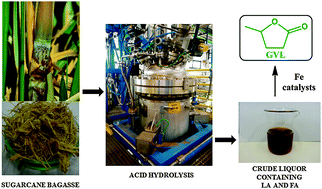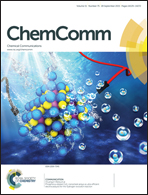Conversion of levulinic acid into γ-valerolactone using Fe3(CO)12: mimicking a biorefinery setting by exploiting crude liquors from biomass acid hydrolysis†
Abstract
The conversion of biomass-derived levulinic acid (LA) into gamma-valerolactone (GVL) using formic acid (FA) and Fe3(CO)12 as the catalyst precursor was achieved in 92% yield. To mimic a biorefinery setting, crude liquor (containing 20% LA) from the acid hydrolysis of sugarcane biomass in a pilot plant facility was directly converted into GVL in good yield (50%), without the need for isolating LA.


 Please wait while we load your content...
Please wait while we load your content...